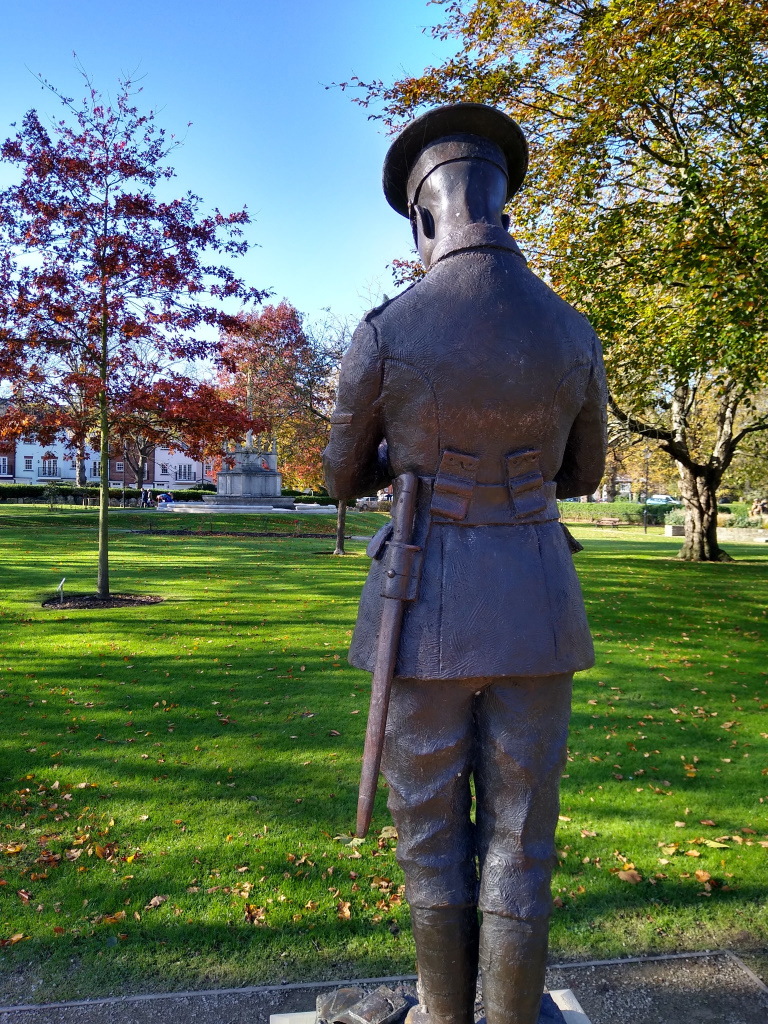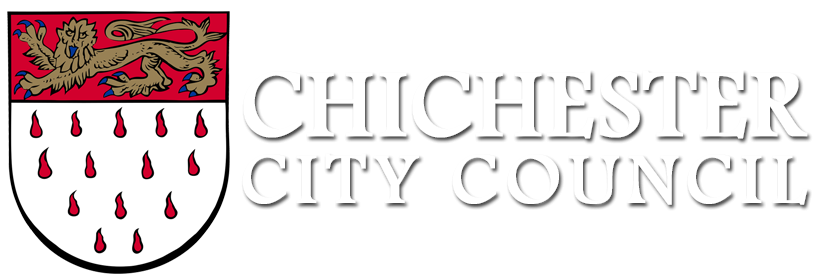Litten Gardens
The War Memorial was originally in Eastgate Square and was only moved to the present location in Litten Gardens in 1940.
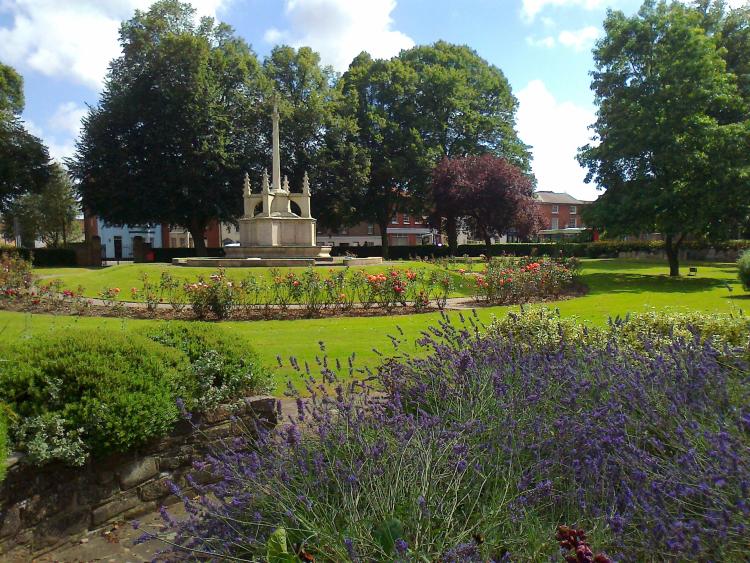
In 1921 the Memorial was unveiled by Sir William Robertson GCB, KVCO, who was one of Field Marshal Douglas Haig’s senior staff; in Eastgate Square. Sir William, who came from a humble background, joined the Army at the age of 16 as a boy soldier and is one of the few people to rise from the rank of Private to Field Marshal.
In the last few years the City Council has been responsible for adding the names of those who fell in the Second World War as the Memorial showed only the names of the First World War dead. This action has been greatly appreciated by relatives and the ex-servicemen and women.
The official programme of events states that the War Memorial was ‘erected in grateful remembrance of three hundred and twenty-three men who gave their lives for their Country in the Great War’.
The War Memorial was subsequently moved to its present position in Litten Gardens, the first service at the new location taking place in 1940. The memorial was, and is now, the responsibility of Chichester City Council.
For many years, the City Council’s maintained an official policy that the names on the memorial were those of the dead of World War Two and indeed applications to add the names of World War One casualties were resisted.
In 2000, further investigation was carried out by Town Clerk, Rodney Duggua, following representations from the Royal British Legion and Royal Sussex Regimental Association about the commemoration of the World War Two casualties. It was, at last, confirmed that the names on the memorial were the casualties of World War One.
The City Council readily agreed that the Chichester fallen of World War Two should be commemorated and four special stone tablets were made by the Cathedral Works Organisation and positioned around the War Memorial; these tablets further record the names of over 200 service personnel who gave their lives for the cause of freedom. Names of casualties of both World Wars are still being added because of family history research and fresh information coming to light.
Each year on Remembrance Sunday, the Mayor and City Councillors along with the Chairmen of Chichester District and West Sussex County Councils process to the War Memorial to attend a short Remembrance Sunday Service and to observe the two minutes’ silence.

In 2017, the City Council took over responsibility for maintaining Litten Gardens and its Property Team work hard to ensure that the Gardens and the Memorial are a place to relax, reflect and enjoy for the residents of and visitors to Chichester.
2018 saw the centenary of the end of World War 1 and, to commemorate this momentous anniversary, a chainsaw sculpture made from Sussex Oak was installed in the newly created Garden of Reflection and Reconciliation. This, and the Elstob stone which was installed in remembrance of Chichester born Wilfrith Elstob VC, DSO, MC, provide fitting reminders of the sacrifices made by the armed forces from Sussex during the Great War.
Colonel Elstob’s Victoria Cross citation reads as follows:
“For most conspicuous bravery, devotion to duty and self-sacrifice during operations at Manchester Redoubt, near St. Quentin, on the 21 March 1918.
During the preliminary bombardment he encouraged his men in the posts in the Redoubt by frequent visits, and when repeated attacks developed controlled the defence at the points threatened, giving personal support with revolver, rifle and bombs. Single-handed he repulsed one bombing assault driving back the enemy and inflicting severe casualties.
Later, when ammunition was required, he made several journeys under severe fire in order to replenish the supply.
Throughout the day Lieutenant-Colonel Elstob, although twice wounded, showed the most fearless disregard of his own safety, and by his encouragement and noble example inspired his command to the fullest degree.
The Manchester Redoubt was surrounded in the first wave of the enemy attack, but by means of the buried cable Lieutenant-Colonel Elstob was able to assure his Brigade Commander that “The Manchester Regiment will defend Manchester Hill to the last.”
Sometime after this post was overcome by vastly superior forces, and this very gallant officer was killed in the final assault, having maintained to the end the duty which he had impressed on his men – namely, “Here we fight, and here we die.”
He set throughout the highest example of valour, determination, endurance and fine soldierly bearing.“
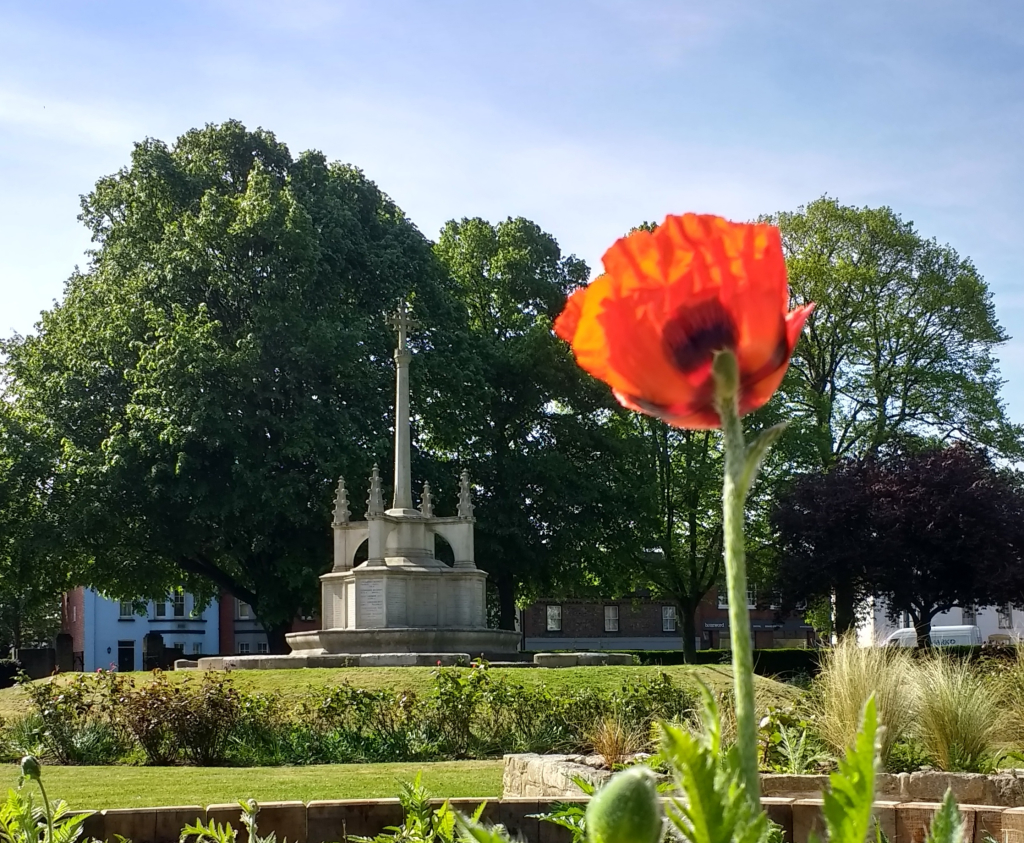
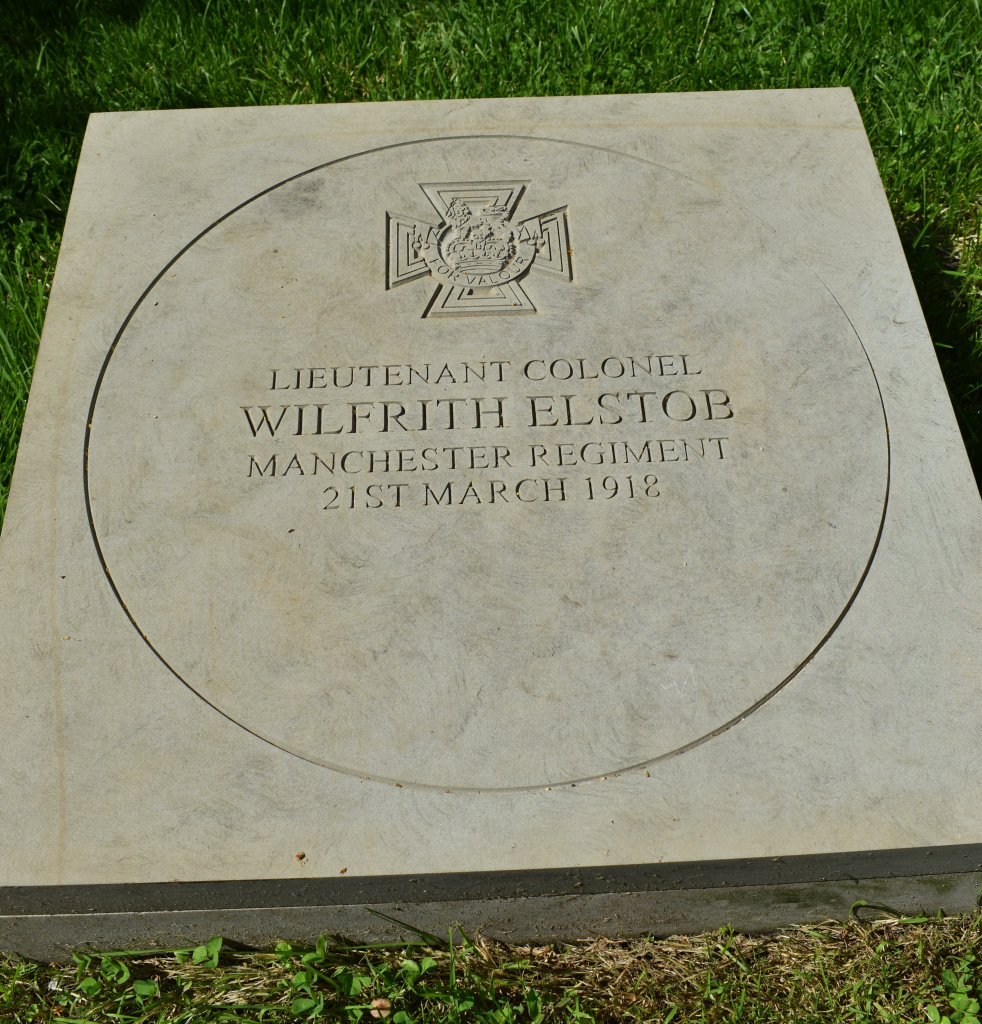
Remembrance Sunday 2019 saw the unveiling of a new statue in Litten Gardens of Lance Corporal Maurice Patten, Royal Sussex Regiment, which was gifted to the City by local sculptor Vincent Gray.
Lance Corporal Patten died of injuries sustained on 13 January 1916 at the age of 24. He is buried in Bethune Town Cemetery, Northern France, and his name is also recorded in Eartham Village Halls (the village where he grew up) and also in Chichester Cathedral on the panels in the Royal Sussex Regiment’s chapel.
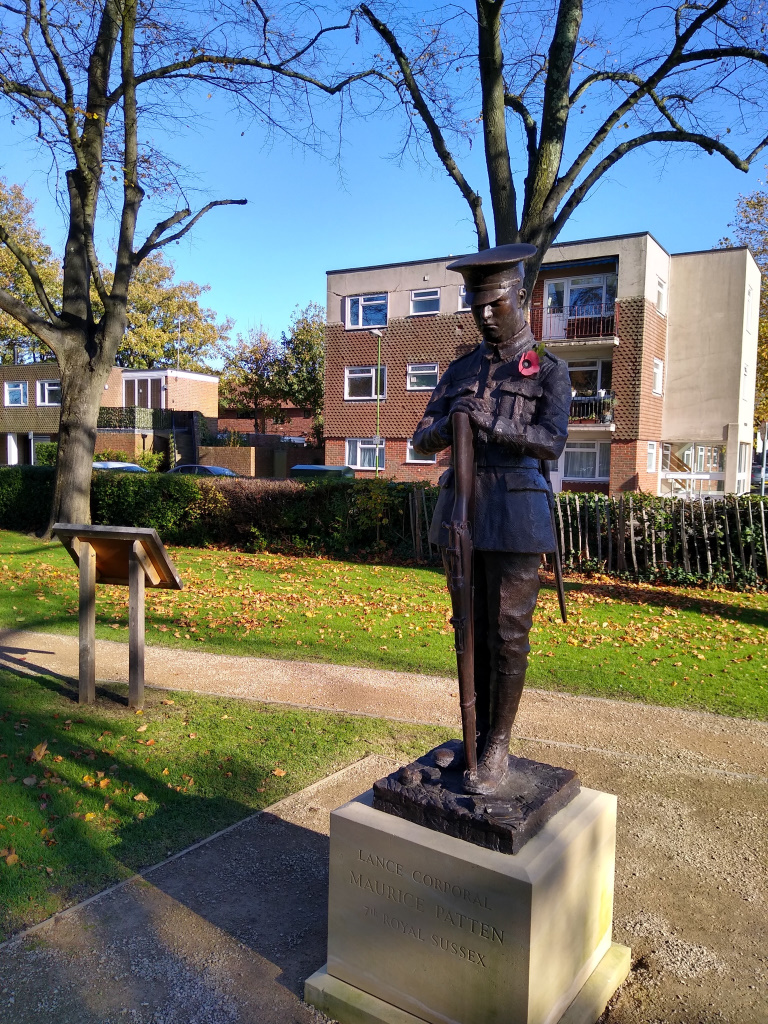
The statue shows Lance Corporal Patten “resting at arms reversed” which is the recognised mouring stance, head bowed and the muzzle of the rifle on the left foot.
Arranged around his feet are his personal effects which his mother received following his death and comprise of tobacco pouch, silver watch and chain, a Bible and four family photographs. The Bible, which survives today, bears shrapnel damage.
